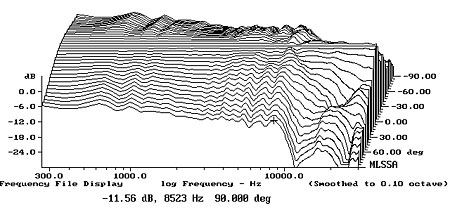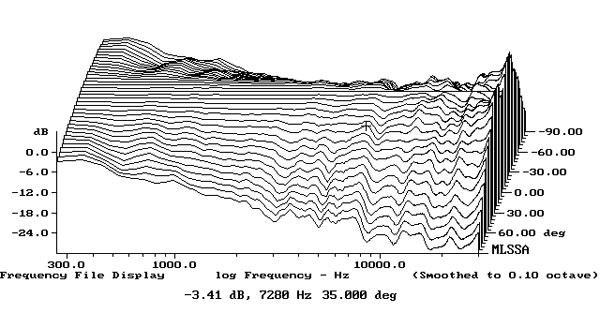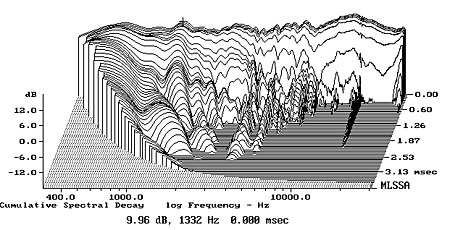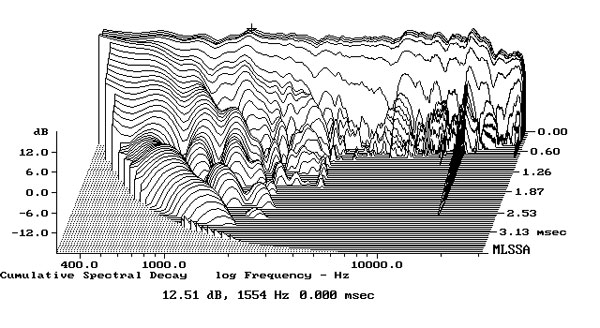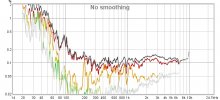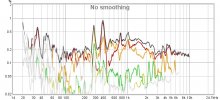I had a listening experience today that put me in mind of this thread. "How much do you get with some of the newer approaches to speaker design?"
My Brother-In-Law (BIL) is in town. He's sort of an old-school Stereo Review/ASR oriented audiophile, not in to "woo-woo" stuff at all, more oriented towards studio level design, and interested more in advancements like active speakers. Though where he lives, he doesn't get to hear much of what he can read about. Today I brought him to a very accommodating local high end store (where I bought my Joseph speakers) who carries the Kii Audio 3 speakers which my BIL wanted to hear. It was a great time.
(BTW, he previously listened to my system and I brought him to my reviewer pal's place where he heard $65K Estelons).
I was able to listen to some Spendor classic (though new) 1/2s, which I'd really wanted to hear. I also heard some large floor standing speakers from Triangle (french). But we spent by far most of the time listening to a wide selection of music on the Kii 3 speakers (without the bass module). (A lot of prog rock too, since he loves that genre).
To compare first what I heard from the Spendors: The Spendors struck me with that wonderful rich but clear tone that I enjoy from the classic Spendor sound (though in this case a bit more neutral and forward than some older modes). The general sound of voices and timbre of instruments were very natural - there was a combination of density and body that gave voices a sense of in-room solidity, yet without edge, sounding appropriately human and soft. A very tricky balance IMO. Highs were open and airy, giving a sense of "happening live, not canned sounding." Eyes closed there was a good sense of hearing *something like* the gestalt of live voices and instruments. To my brain the timbre of the sound was generally "correct" to the impression I carry around in my head of live acoustic sources, but there was still some sense of homogenization to everything, a slightly softened presentation, a slight lack of purity and clarity. I found listening very compelling, but ultimately would be happier with some other speakers that
sound 'right' to my ear, but sound less homogenized.
The Kii Audio 3: I've heard them numerous times now and today just re-enforced previous impressions. They sound generally clean, mostly "invisible" as sound sources, yet unlike some speakers that "disappear" they don't sound wispy, the Kii Audio 3s have meat on the bones, with a very even balance from bottom to top. Where some speakers you might get more of the top end skin hits of a bongo (on some of my reference tracks) the Kii Audio 3s gave that detail too, but also the weight of the hits on the bongos as well. Midrange was satisfyingly complete, no sense of suck outs emphasizing one thing or another, so everything sounded balanced, and yet variations in recordings/vocals sounded obvious too. A monitor sound without being punishing. And of course they did that wonderful trick with such deep, controlled bass from a relatively small speaker.
I could hear more control, more tonal individuation between bass instruments, vs the same tracks on the two other speakers I listened to in the store.
And my Brother In Law? He was very impressed. He's not big on describing sound, but essentially he thought the Kii 3s were terrific and really just the type of gear and sound he would be looking for, if he's to purchase another speaker (he currently owns Sonus Faber speakers he bought ages ago). Of all the systems he has heard so far on his trip hear, I had the impression the Kii 3s would hit his bulls-eye the best.
Ok what did I find the Kii 3s, the more "advanced" active-based speakers brought to the table?
Well....I heard nothing at all paradigm changing. I've heard plenty of other audiophile passive speakers that impressed me a lot more, and that rendered a number of those tracks with more "you are there" scale, clarity, timbral realism etc (to my ears). For instance my old Thiel 3.7s dug out plenty of nuance and timbral precision, dynamics, clarity, imaging etc as well. I wasn't hearing anything "wow" at all or especially "advanced" from the Kii 3s. More subjectively, while the Kii clearly had some advantages in frequency range, clarity and precision, nothing sounded quite as natural (eyes closed test) to me as some of the stuff I heard on the old Spendor design. And frankly, after listening to the Kii speakers for a while I wanted to run home and hug my system. I find the sound soooo much more beautiful and beguiling at home. Not a fair apples to apples comparison, but the general character of the Kiis didn't want to make me keep listening.
So, on an ultra subjective level...purely based on "what I prefer" while I could hear the Kii speakers do some excellent things, they left me cold. On a subjective-trying-to-be-more-objective level, just in terms of "judging the overall sound quality" they sound "different" than many good passives but much "better?" Eh.
It sort of reminds me of the Single Ended amplifier blind test thread on this site, where a tube design with some of the most wretched measurements and poor SINAD is put up against a properly measuring design. The difference turned out to be subtle, some people even struggling to hear a difference. In the same vein, while clearly speaker design IS making advancements, in the end perhaps the latest designs won't always necessarily result in large sonic differences vs competing (or older) designs. A bit of us audiophiles making mountains out of sonic molehills...which is what we do, as enthusiasts.
I don't think that means of course nobody can find some new speaker design obviously much more to their liking, and be very enthusiastic about some of the problems they are solving. Even in the Big Picture, relatively small differences can seem really big to us when we care about them.
And of course the above is just a personal encounter with a few speakers. Nothing about it entails the question I posed is moot. It's interesting to ponder what aspects can still be improved, sonically, (even if taste is left to the listener) in modern speaker design.
That's my take today, FWIW.


